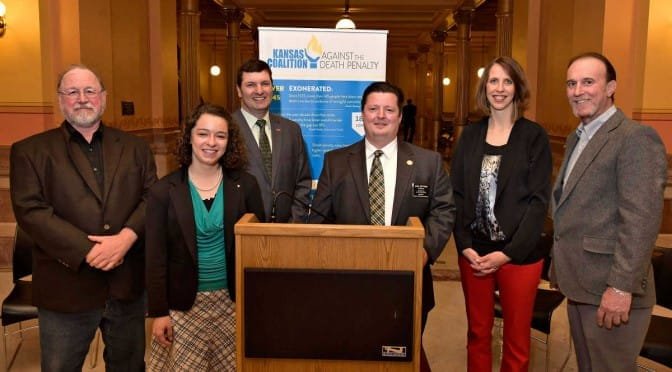Author: Guest Author
-

Political perspective masquerades as ‘documentary’
A documentary film about the Kansas budget is based on unfactual material. Dave Trabert of Kansas Policy Institute explains.
-
Kansas Center for Economic Growth: Short on facts again
The Kansas Center for Economic Growth’s latest scare tactic on education funding is filled with demonstrably inaccurate data which they use to make false claims about tax reform and the efficacy of education spending, writes David Dorsey of Kansas Policy Institute.
-

School employment data shows gaps in reporting and wide variations among districts
Kansas school districts vary widely in employment ratios, and that’s not counting the unreported employees, writes David Dorsey of Kansas Policy Institute.
-

Kansas conservatives call for repeal of death penalty
Today at the Capitol, Representative Bill Sutton, R–Gardner, joined a group of conservative leaders calling for support of HB 2129. This bill would replace the death penalty in Kansas with life in prison without the possibility of parole.
-

Kansas school funding block grants, new formula benefits students
Estimates from the Kansas Department of Education show that school funding would set new records under the block grant proposal, writes Dave Trabert of Kansas Policy Institute.
-
Kansas school funding still sets new record with block grant proposal
Kansas school funding is at a record high this year and is projected to rise next year, writes Dave Trabert of Kansas Policy Institute.
-
In Kansas, resolving school district spending variances could yield savings
Large variances in spending among school districts show that efficiency efforts driven by the Legislature could easily yield hundreds of millions in savings, writes Dave Trabert of Kansas Policy Institute.
-
Better outcomes at a better price in Johnson County
If the other five Johnson County districts operated at the per-pupil cost of De Soto, the burden on taxpayers could be reduced by $127.1 million, writes Dave Trabert of Kansas Policy Institute.
-
College environmentalists use public records laws
College environmentalists are using public records laws to investigate the circumstances surrounding the hiring of an economist at the University of Kansas.
-
Who decides? When it comes to planning, is it the people, the politicians, or the bureaucrats?
I firmly believe that local government’s role is to provide a firm rule of law where there is a level playing field in it with clear rules for everyone to build their future for themselves and their families. This is the very limited role of government for a free people in a liberty loving society,…
-
Kansas school funding controversy is about entitlement, not need
When every Johnson County school district qualifies as a property-poor district, you know you have a broken school funding formula … and a controversial claim based on entitlement, writes Dave Trabert of Kansas Policy Institute.
-

Judicial panel used cherry-picked data in Gannon decision
If the increase in education funding prescribed in the most recent Gannon decision were to become a reality, it would mean a nice raise for teachers and likely more administrators, but student outcomes would remain flat and achievement gaps would continue, writes David Dorsey of Kansas Policy Institute.